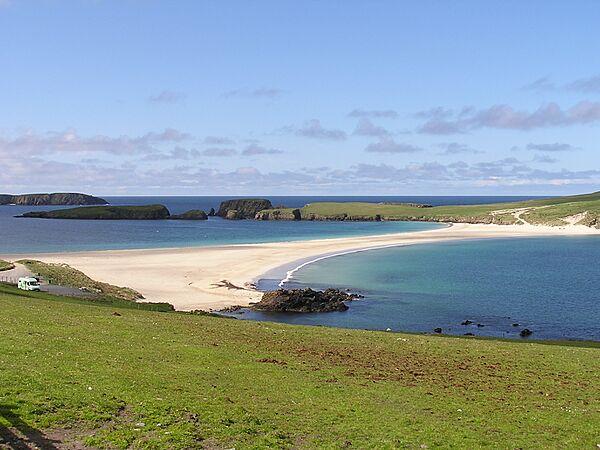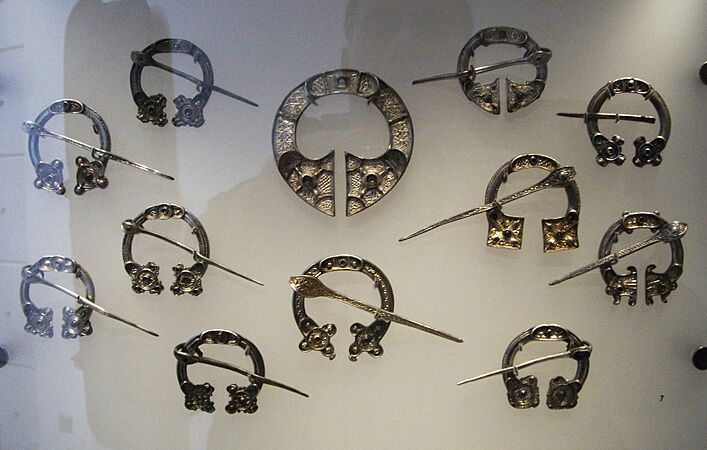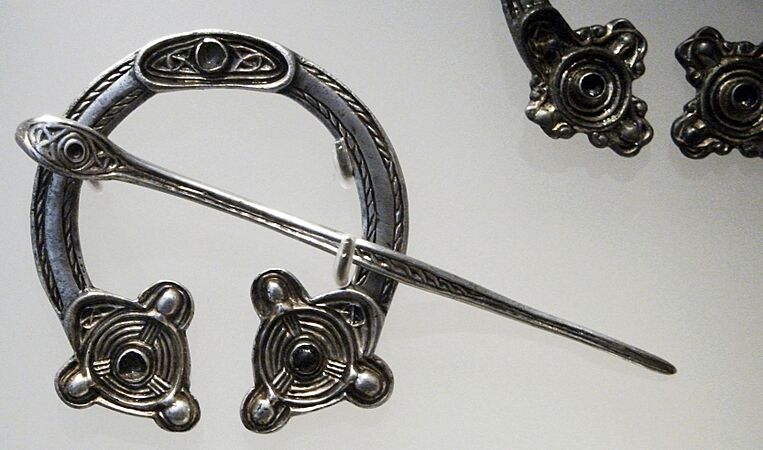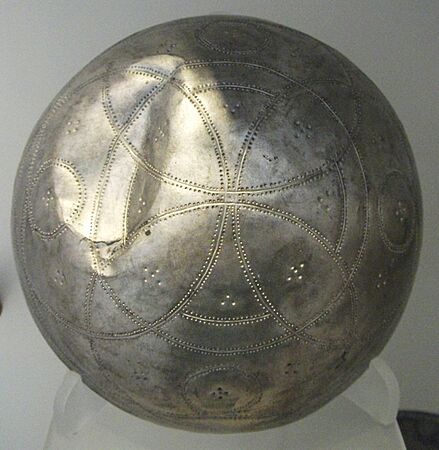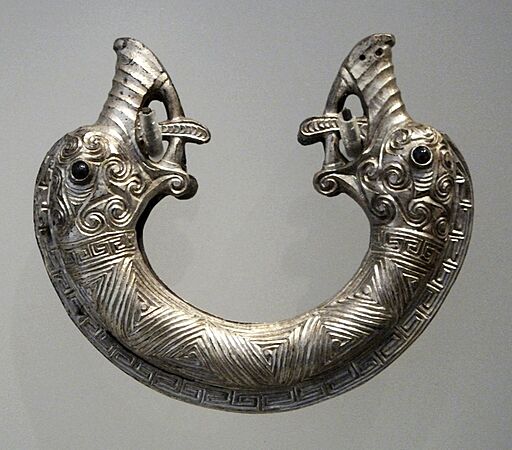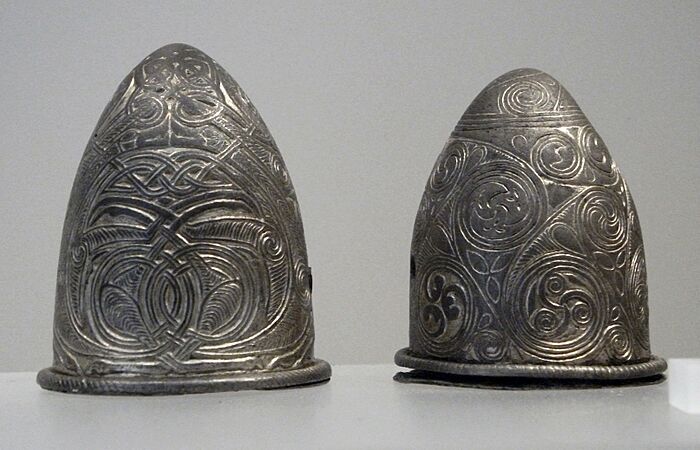St Ninian's Isle facts for kids
| Gaelic name | Unknown |
|---|---|
| Norse name | Unknown |
| Meaning of name | na |
| OS grid reference | HU365210 |
| Coordinates | 59°58′N 1°21′W / 59.97°N 1.35°W |
| Physical geography | |
| Island group | Shetland |
| Area | c. 72 ha |
| Area rank | na |
| Highest elevation | 53 m |
| Administration | |
| Sovereign state | United Kingdom |
| Country | Scotland |
| Council area | Shetland |
| Demographics | |
| Population | last inhabited 1796 |
St Ninian's Isle is a small piece of land in Scotland. It is connected to the bigger island of Mainland, Shetland by a natural sand and shingle bridge. This bridge is called a tombolo, and it's the biggest one in the UK!
The tombolo is about 500 metres long. Locals call it an ayre, which comes from an old Norse word for "gravel bank". In summer, the tombolo is usually above the water, so people can walk across it easily. But in winter, strong waves can wash away some of the sand. This means the bridge might be covered by the sea at high tide, or even all the time, until the sand comes back in spring.
Because of this, St Ninian's can be seen as either an island or a peninsula. It covers an area of about 72 hectares. The closest village is Bigton, which is also on the Shetland Mainland.
St Ninian's Isle is famous for a very important discovery made in 1958. A valuable collection of old metal objects, mostly made of silver, was found under the floor of a church ruin. This collection is known as the St Ninian's Isle Treasure. Many different kinds of seabirds, like puffins, visit the island, and some even build their nests there.
Contents
A Look Back in Time: St Ninian's History
The name "St Ninian's Isle" tells us that the island has a connection to churches and religious history. This is similar to other islands in places like the Northern Isles, Hebrides, and Faroes.
But the island's history goes back much further than Christianity. Very old graves from the Neolithic period (the New Stone Age) have been found inside the walls of the old chapel. This shows that people lived on or visited the island thousands of years ago.
The Old Chapel and Its Secrets
You can still see the ruins of a chapel on the island today. This chapel was built around the 12th century. It was dedicated to Saint Ninian, who is a very important saint for Shetland. He is also honored on the nearby Orkney Islands.
In 1958, archaeologists were digging at the chapel ruins. A local schoolboy named Douglas Coutts was helping them. He found a hidden treasure! It was a collection of silver items from the 8th century, hidden in a wooden box under a stone slab. People think the treasure might have been buried to keep it safe from Vikings who raided the area, or perhaps it was stolen by them.
During the same dig, they also found the remains of an even older chapel, built before the Vikings arrived. This suggests that there might have been a religious community on the island a very long time ago.
Who Lived on St Ninian's Isle?
The last family to live on St Ninian's Isle was the Leask family. Henry Leask and his family left the island in 1796. Henry Leask had two wives and a total of 13 children!
The Amazing St Ninian's Isle Treasure
The St Ninian's Isle Treasure is a collection of very old and valuable silver objects. It was found on July 4, 1958, by Douglas Coutts, the schoolboy we mentioned earlier. He was helping Professor A. C. O'Dell from Aberdeen University with an archaeological dig.
The treasure includes silver bowls, beautiful jewelry, and other pieces. Experts believe these items were made around the year 800 AD.
Images for kids


